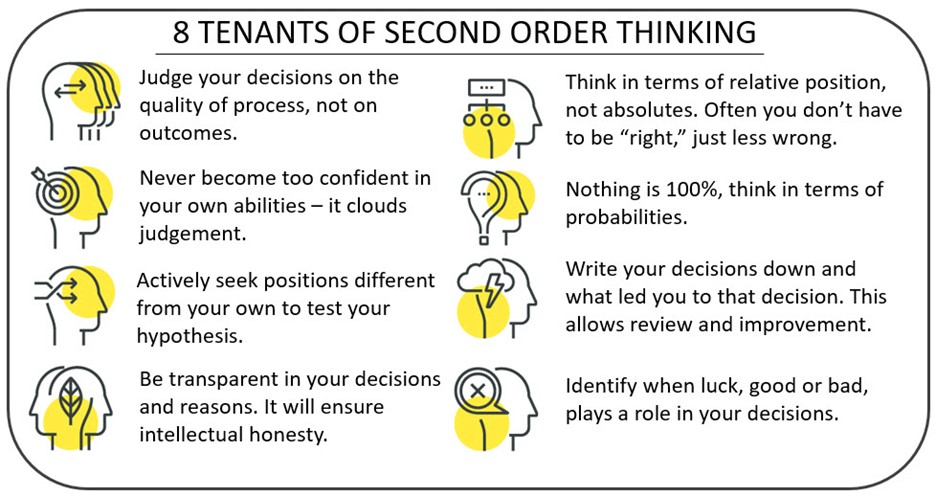Applying Second-Order Thinking In Banking
We have used the term “second-order thinking” in our writings, and some bankers were curious about what exactly we mean. The term came to popularity in banking after Howard Marks wrote his seminal work on investments – The Most Important Thing. The “most important thing,” as described in the book, is the ability to drill down in order to get to the heart of an issue. The concept has recently had a resurgence as it is a core tenant in Ray Dalio’s book, Principals. This article explores how this thinking framework can be put to use and highlights how to apply it more often to banking.
Second-Order Thinking Example
Second-order thinking attempts to understand the quality of thought. It’s thinking about thinking. The principle follows a simple template. I know X. I know X because of Y, and this is what I am going to do about X.
First-order thinking is – “I think interest rates are going up.” Second-order thinking is, “I think interest rates are going up because I place a higher probability than the market on inflation not being under control, and I am going to shorten the duration of my assets.”
First-order thinking is – “Industrial lending is still performing well. We should keep originating.” Second-order thinking is – “Industrial lending is still performing well, but most bankers believe this, and vacancy rates are starting to increase while pricing continues to tighten. Thus, we should reduce origination.”
See the difference?
First-order thinking is just adopting a common view about the future. Second-order thinking is figuring out what drives that view, what is the range of possibilities and probabilities of outcomes, and then taking human psychology into account.
Now, the crowd is not stupid and, by in large, often right. However, when they are wrong, that is how you can set your bank, and yourself, apart. The key is making sure your analysis of the situation is correct, you reach the right conclusion based on that analysis, and you have the courage to act on your view.
It’s not enough to be different; you must also be correct. The goal is not blind divergence but rather a way of thinking that sets you apart from others. A way of thinking that gives you an advantage.
How To Think on the Second Order
While being right while others are wrong is the stuff that billionaires are made on, the more common value of second-order thinking is the process itself.
Second-order thinking can be kicked off with a few questions: Do I have experience, knowledge, or insight about the situation that most people don’t? What is the advantage that I have? Is there a difference between what I think the future value of an event will be and what the public believes that value to be?

Putting This into Action
Part of the skill with second-order thinking is knowing when to act. While it is always beneficial to practice second-order thinking, not all situations require you to act on your position. Oftentimes your conclusions will be that of consensus. However, if your opinion is always that of the consensus, you are probably not being rigorous in the application of second-order thinking.
Decision making is as much art as science. The goal is not to make perfect decisions but rather to make better-than-average decisions and get better over time. Doing this requires better insight and fewer errors in analysis – the heart of second-order thinking.

